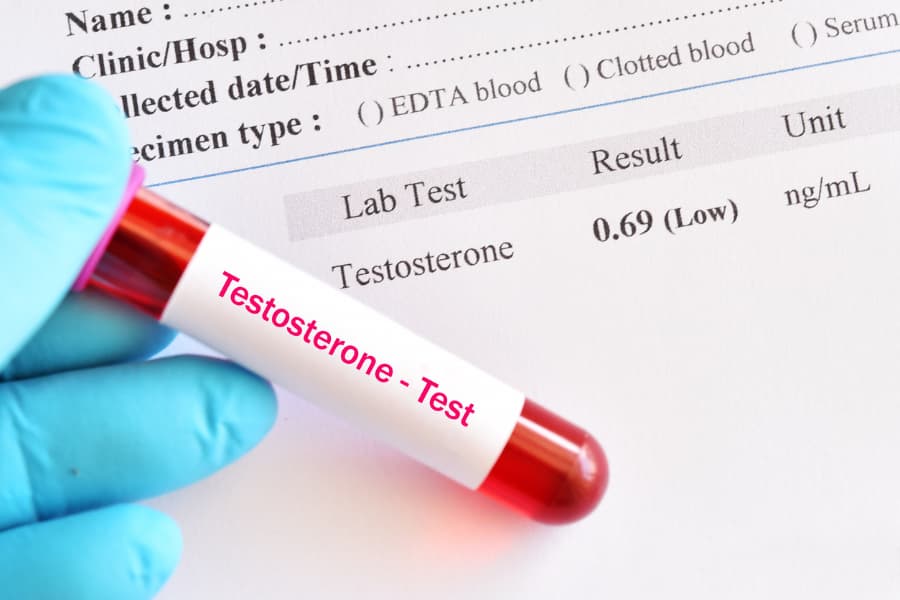Testosterone is the primary male sex hormone and androgen. The hormone is produced in the testicles and plays a significant role in the development of male characteristics. The bodily processes influenced by testosterone include regulating libido (sex drive), bone growth, distribution of fat, muscle size and strength, and the production of red blood cells and sperm. As men age, their bodies often produce less testosterone and in some cases not enough (male hypogonadism).
Although it’s common for aging men to have lower testosterone levels, a significant reduction can be a cause for concern as it can lead to other health ailments. This condition, also known as low-T and testosterone deficiency syndrome (TD), can have several different causes. Here, the urology department at Richmond University Medical Center discusses what causes low testosterone and the signs to be aware of.
How Common Is Low Testosterone?
The American Urology Association identifies low testosterone as less than 300 nanograms per deciliter (ng/dL). While men may have feelings of embarrassment, they are not alone. Low-T is incredibly common.
Estimates show about 2.1% of men, or about two men in every 100, have low testosterone levels. Older men are most likely to have reduced testosterone levels with nearly 39% of men ages 45 years and older having the condition. The percentage increases with age as 50% of men over 80 years old have below-normal testosterone levels.
Aging males are not the only ones who can be affected by TD. The condition can impact men of all ages but is most prevalent in men who:
- Are obese
- Suffer from poorly managed Type 2 diabetes
- Have obstructive sleep apnea
- Are positive for HIV/ AIDS
What Causes Low Testosterone Levels?
The cause of low testosterone depends on the type: primary hypogonadism (testicular disorder) and secondary hypogonadism (pituitary/hypothalamus dysfunction).
Causes of Primary Male Hypogonadism
Primary hypogonadism is present in men whose testicles do not function properly, which prevents them from producing normal levels of testosterone.
Congenital conditions (acquired at birth) that can cause primary hypogonadism include:
- Anorchia (absence of testicular tissue)
- Cryptorchidism (undescended testicles)
- Leydig cell hypoplasia (underdevelopment of Leydig cells in the testicles)
- Klinefelter’s syndrome (abnormality of the sex chromosomes X and Y)
- Noonan syndrome (a genetic condition that stops the development of the testicles)
- Myotonic dystrophy (a group of inherited disorders that causes progressive muscle wasting and weakness)
Acquired conditions that can cause primary hypogonadism include:
- Injury to the testicles
- Testicle removal
- Chemotherapy or radiation therapy to the testicles
- Use of anabolic steroids
- Certain tumors
- Mumps orchitis (inflammation of one or both testicles affecting testosterone production)
Secondary Hypogonadism
Individuals with secondary hypogonadism have healthy testicles that do not function properly due to a problem in the hypothalamus or the pituitary gland (parts of the brain signaling the testicles to produce testosterone).
Congenital conditions that can cause secondary hypogonadism include:
- Isolated hypogonadotropic hypogonadism (a condition that leads to low levels of gonadotropin-releasing hormone from birth)
- Kallmann syndrome(abnormal development of the area of the brain that controls the secretion of pituitary hormones)
- Prader-Willi syndrome(a genetic disorder that can cause hypothalamus dysfunction)
Acquired conditions that can cause secondary hypogonadism include:
- Brain injury or head trauma
- Certain medications
- Kidney failure
- Cushing’s syndrome (a condition caused by too much cortisol in the body)
- Liver damage
- Hemochromatosis (iron overload)
- Hyperprolactinemia (abnormally high levels of prolactin)
What Are Signs of Low Testosterone?
Some men living with TD are not aware because in some cases the condition does not produce any signs. Other times, men can identify potentially low testosterone levels by the following symptoms:
- Decreased sex drive
- Trouble getting or maintaining an erection
- Decrease of muscle mass and strength
- Increased body fat
- Lower endurance
- Depression
- Low sperm count
- Shrinking testicles
- Difficulties with focusing and memory loss
Low Testosterone Treatment in Staten Island
Male patients in Staten Island, New York experiencing symptoms associated with infertility, low testosterone, erectile dysfunction, or other issues regarding their reproductive systems will find compassionate, comprehensive care at Richmond University Medical Center. We provide accurate diagnoses and personalized treatment plans to meet desired outcomes.
The care offered at Richmond University Medical Center goes beyond innovative treatments. Our team understands the emotional toll low-T and other male reproductive conditions can take. For this, we are happy to recommend and refer patients to counseling services and support. Patients interested in learning more about what low testosterone is and how it’s treated by our dedicated medical professionals can contact us today or schedule an appointment.




